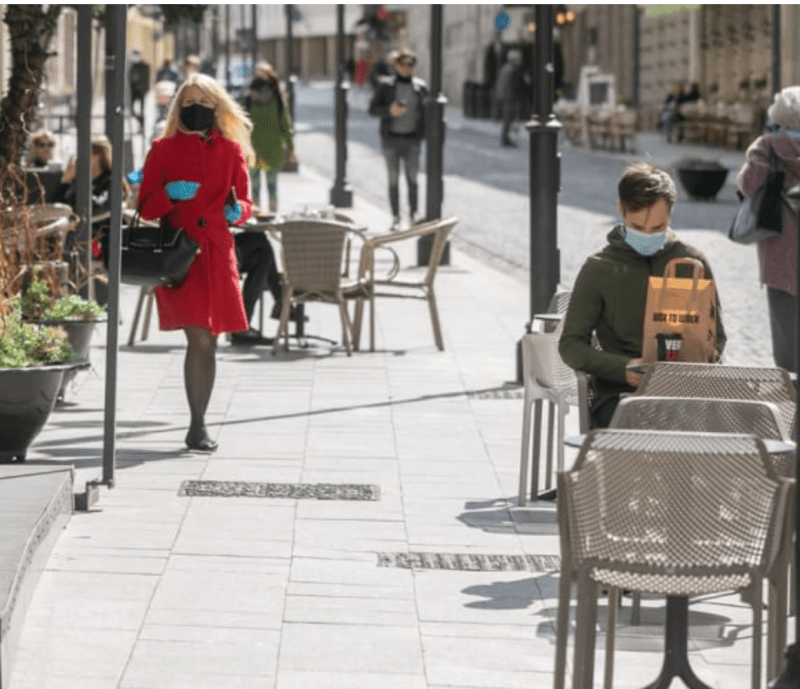City leaders finally have a playbook for making their streets COVID-19 safe.
The National Association of City Transportation Officials has released a downloadable guide, Streets for Pandemic Response and Recovery, which functions as a "best practices" of various municipal efforts around the nation to deal with streetscape issues stemming from the global pandemic.
The playbook is a result of three months of analysis and documention by NACTO of cities' ongoing efforts to redesign and adapt their streets to the new realities of the virus and the recovery beyond it. The expansive (and updatable) document offers both concrete, rapid-response, design-based treatments as well as sample principles to help cities act responsibly and equitably as they work to transform the built environment.
"There may be limited mobility options as the crisis has slashed traffic volumes and transit service and people shelter at home," said Janette Sadik-Khan, livable streets icon and NACTO chair. "But these empty lanes provide new possibilities for people to use streets for essential trips and healthy activity right now, and they form the outline of the future cities we need to build. Creating safe, walkable streets and choices for getting around are critical during the initial crisis response, and also to achieving a long-term economic recovery that is equitable, sustainable, and enduring."
The guide could be a game changer, especially for cities who have struggled to come up with strong street design responses to the pandemic on their own. Here are a few of the highlights:
Equity first
No street design guide is complete with out an acknowledgment that street design alone is not a panacea for vulnerable road users — especially for people of color, who face dangers far beyond traffic. NACTO is wise to urge cities to center systemic inequities in their conversations about adapting the built environment, before they even think of technical details like lane markings and bollards.
An evolving response
One of the most impressive pages in the guide is this simple chart that acknowledges that not all street design solutions are appropriate for all street settings — especially as stay-at-home orders come and go (and, potentially, come again).
A new vision for the American sidewalk
The COVID-19-era sidewalk doesn't just need to be wide, connected and ADA-compliant — it also needs to provide extra space for socially distanced walking and queueing for area businesses, and do so quickly, cheaply, and without obstructing other forms of traffic. (And before you ask: no, removing on-street parking spaces to accomplish all of this does not doom local businesses.)
Strong examples of Slow Streets
Too many American city leaders have struggled to imagine how a Slow Streets program would actually work in their unique towns, even as more and more communities around the world are stepping up and providing strong examples. The NACTO guide compiles some handy best practices — and some extra visual inspiration.
The farmer's market model, re-imagined
Local retailers need a serious lifeline right about now – and many Americans wouldn't mind a lower-risk way to get our groceries, especially if we don't have access to expensive delivery services. This example from Myanmar, and NACTO's larger list of recommendations, provide a great example of what a safer shopping future might look like if we're willing to rethink our streets.
Finally: the sane way to do outdoor dining
We don't know why cities can't seem to figure this out, but NACTO is putting rest to the debate about the best way to do COVID-safe outdoor dining. Hint: it's not just taking over the sidewalk with no consideration for walkers. You have to take over the whole parking lane!





